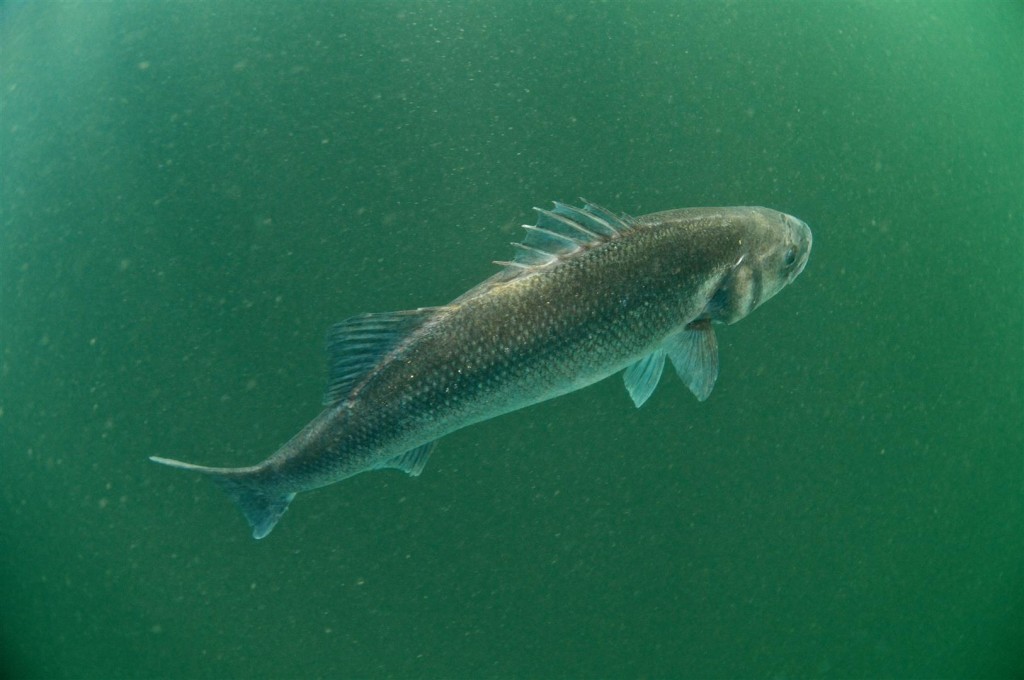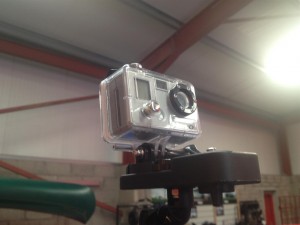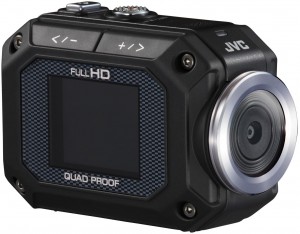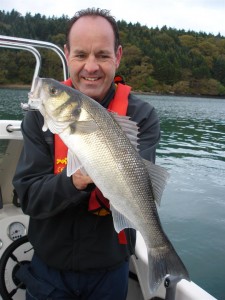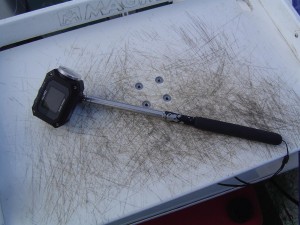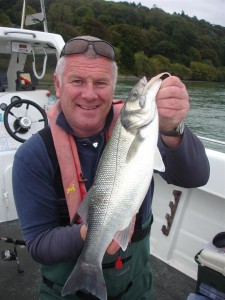Pictures are one thing and video is another! Jim Clohessy looks at the video phenomenon that is sweeping all branches of angling and adventure sports. Thinking of getting involved? Read on to get the options.
Video
Ok, you might not fancy yourself as the next Stephen Spielberg and you might consider picture taking as being an interference in your fishing but the advances in technology are making video an easy and less obtrusive way to capture the magic moments that have previously been the preserve of the picture camera. I am captivated by video and it happened largely by mistake. I began to look at action cameras as being a method of capturing a certain style of picture for my magazine features. I wanted a very wide angled picture that would convey the message to the reader of what it is like when fishing from a small angling boat. The idea of capturing some pictures using the built in time lapse feature of most action cameras tweaked my interest. This idea launched me on a video taking and editing path that had been great fun and in no small way has contributed to my enjoyment of boat angling.
Perhaps if I outline my journey to date it might help readers avoid the pitfalls I encountered as I set out. Whatever about a couple of years ago, the choice of video camera has become daunting. There are literally dozens of manufacturers offering an Aladdin’s den of superbly quirky and functional cameras. Once the camera you have has a wide angle lens and is capable of recording in High Definition (HD) you are away in a hack and can start recording some action. That said if you have not purchased a camera and are interested you have much study to do before parting with your hard earned cash. I began by checking out what was available and the specifications of each camera. At the time I was left with a choice between three cameras: The GoPro, The Drift and The Contour. At the time each manufacturer had just one model of camera so the decision was made somewhat easier than now when each manufacturer has multiple models within the range of cameras they offer.
GoPro
Gopro are surely the most famous of the action cameras. In fact GoPro have established themselves as being the “hoover” of the action camera business. You will often hear fellows talk of their GoPro when in fact they own one of the many other cameras on the market. GoPro currently have three “Hero” cams on the market. Each is slightly better than the last and the price ranges from €250 to €450 depending on the kit bought and the specification of the camera.
Drift
Somewhat lesser known than the Gopro but offering some features as standard that were initially extras on other cameras. My first action camera was a Drift and I have had a few models in the range. Earlier models are splash proof but not water proof without an optional housing. I neve felt the need to dunk my Drift into the water. The latest drift cameras run from a very competitive €150 to the flagship Ghost model at around €370.
JVC
The arrival of the JVC GC-XA1 Adixxion marked the entry of the well-known manufacturers in to the action camera marketplace. It caught my attention because of its small form factor and the fact that it is waterproof without the need for a housing. It also has features that are extras on many other cameras. Due to its small size, and the range of features the JVC is my current favourite.
Expect to pay somewhere between €250 and €299 for your JVC Adixxion.
Choices, Choices
Buying an action camera is similar in many way to buying a boat! There is a growing range of cameras out there with varying sizes, features and extras. Your purchase will be a compromise based on what you want to spend and what you want to achieve with your camera. When I went to buy my first camera I actually filled out a spread sheet on the various features of each camera and rated the importance of each feature. Ultimately I bought my first Drift 170 HD based on that spreadsheet. Looking back most of the reasons for purchase remain the same. Each camera will have some drawback compared to the others or some feature will not be present. I think you must study the features and decide which features will be important to you as well as choosing the camera that fits well within your budget. As well as the cameras featured here there are also offerings from: Sony, Polaroid, Contor, Ion, Muvi and many more. Don’t forget the quadcopters too!
You really need to decide what you hope to achieve while using your camera. If you want to record some action that you can easily edit and upload to the like of YouTube after some editing then the Drift HD720 is an interesting option. It will set you back €150, one of the cheapest branded cameras available. It has a built in LCD screen so you can be sure what you are capturing. It has a simple remote control for switching on and off the record feature. It has a rotateable lens so you can always set the scene straight no matter what way the camera is mounted. Is there a down side to the HD720? Well yes there is, two really. Firstly the Drift is not completely waterproof. It says it will take a dunk to 1m but I would not be confident. That said, if dunking your camera is your thing then a housing can be purchased for around €40. The second is that the maximum definition is 720p. This is a minor detail really as 720p is for all intents and purposes classed as HD. And in most cases capturing in 1080p will narrow the viewing angle in any case. The new flagship model is waterproof to 3m, records in 1080p and has a raft more features for the price. The Dift HD720 remains a superb basic buy. There are other entry level cameras that are new to the market and similar in many ways to cameras (read blatant copy if you wish!). One such camera is offered by 7 Day Shop.com. They have a whole range of accessories such as head straps and rail holders all at an affordable price. The basic camera starts at £99 Sterling.
So what do the high end cameras offer in terms of features? Let’s take a closer look at the JVC Adixxionand you will see why it has become my camera of choice over any of the other cameras available in what is becoming a confusing and large marketplace. Firstly the JVC operates to 5 metres underwater without any additional housing. If you want to go deeper than that there is an optional dive housing available. It can be dropped from a height of 2 metres without fear of damage – it is all part of the “QuadProof” system. I think we can take it as given that the JVC is a tough little camera. The reason I like the lack of housing is that housings by their nature tend to fog up during warm summer days and dunking into cold water. This is something that vexes many Gopro owners.
The JVC comes with an LCD screen built in. So does the Drfit. On a GoPro you have to purchase an optional “LCD Backpack” in order to have the ability to playback on site or to use during setup. While it is rare that I would use the playback I think the ability to set up the camera properly and to be able to see what I am going to film is important.
The JVC does not come with a remote control. The camera relies on the built in Wifi to allow you to control the camera, and monitor filming, from your smart phone via a dedicated app. This used be an optional extra on many cameras but now becomes standard on the higher end cameras. The JVC will also allow me to stream video directly to the Internet. Watch out shortly as I hope to stream live fishing – I will do it for the craic!
You can use these action cameras as stills cameras too. The wide angle lens will take a fine picture although the limitations of these little cameras must be recognised. All of these cameras will shoot time lapse pictures. Once set up the camera will fire off pictures at a set time interval and will keep shooting until the memory card fills or the battery runs out. The JVC will automatically “stitch” your time lapse pictures into a video clip if required.
So if you are sold on the idea of doing a bit of filming this season apart from the camera what do you need to purchase to get yourself properly kitted out? You could do with a decentsmall bag in which to carry your bits and pieces. Your camera will not be supplied with a memory card. You will need at least a 16gb card or a 32gb will cover most filming. I carry 2 16gb cards. Look for the highest class of card. Class 10 is the current favourite, basically the camera will write fastest to a class 10 card.
I have purchased some spare batteries and a charger for my JVC. The average battery life is about two hours. Best to have a few spare in order to not miss out on any action during the day. You may have your camera on standby for long periods but only record when there is a bit of action happening. Charging batteries using the supplied USB cable can take a while whereas a plug in charger will charge a battery will charge much faster.
Once you have the means for recording clips sorted there is only the matter of fittings to hold your camera before you hit the water. Most cameras come with a range of fittings included and then there are plenty optional items to choose from. The JVC camera has two standard camera threaded fittings, one on the side and one on the bottom. The JVC system includes a goggle adaptor and a range of mountings. There is not a rail mount adaptor. Hama make a super rail mount that can be purchased online. Many GoPro aficionados get a chest mount as well as the standard head mount. I have fitted a tripod mounting to the boat for easy fitting. I also use an extendible arm that is very hand when you want an overhead shot, a close in shot of another angler or even an underwater shot where you dunk your camera underwater. The range of holders is only limited by your imagination!
I usually find that I concentrate on one medium only when fishing. I tend to either take still or i take video. It is enough work doing one well than succeeding in doing both fairly! Once you have captured your footage you will surely find it necessary to edit the footage in order to make a nice clip for the purposes of uploading to Youtube or Vimeo or another of the many video sites. You will find that Vimeo is the home of more “arty” video makers whereas YouTube is the by far the most popular site. If you upload to only one site you are better off going with Youtube. I have downloaded Windows movie Maker and Windows Live Movie Maker. Both are free programmes that will handle basic editing, enough for the production of nice simple clips. After that you can let your imagination run wild as you try out different editing styles and action angles. Video is not for everybody, just as taking photos is not for everybody. Video is an interesting medium and a great way to get a message across or just to highlight the beauty or excitement of your average fishing trip. Be careful as you dip you toe in the video clip pool – most are hooked immediately!
In fairness they are of varying quality but there are some real well made video clips that will educate as well as entertain. I particularly like the little clips that many of the lure manufacturers put up. These clips can give you a great insight as to how a particular lure should be worked in the water.
It is no harm to create an account in Youtube as then you will maintain a history of viewing and Youtube will even begin to suggest clips based on the types of clips you have been watching.
Fact: Before 2020 80% of internet will be video based!
Here one of my favourite clips:

